The minuscule Bohra community has been living in Mangalore since about three and a half centuries. Hardly possessing strength of 85-90 people, this Gujarati ghetto living in Mangalore is the only Bohra contingent one would find across the entire coastal strip of Dakshina Kannada, Udupi and Uttara Kannada districts.
“About 350 years ago, our ancestors came to Mangalore for trade from a place called Khambaat (Cambay) and Surat in Gujarat. That also happens to be a coastal region like Mangalore and we came here via sea route. Our people would take back roof tiles from here as Mangalore was known for its tiles back then. In return they would sell perfumes. Some of them liked Mangalore and saw business opportunity here and settled down. The Bunder area was the gateway for all the trade and even today all of us are housed in this Bunder/Kudroli area itself. There are 18 families here in Mangalore and this is the only Bohra group you will find around. We do not have any presence in Bhatkal either. Originally there were 10-12 houses but our tally grew with 4-5 additional families joining us some ten years ago. These families came for hardware business, hailing from Siddhpur in Gujarat”, says Juzer Ibrahim Kagzi, a member of the Mangalorean Bohra community and a trader at the Bibi Alabi Road.
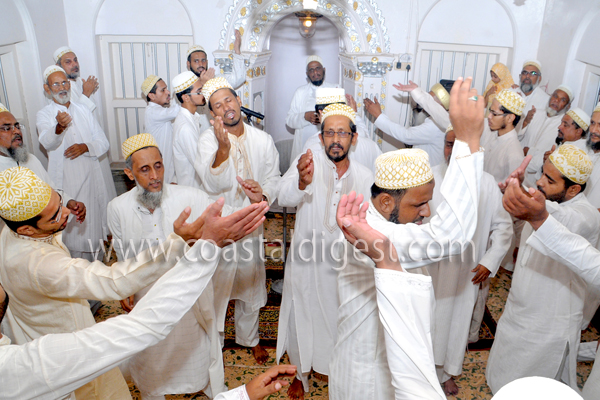
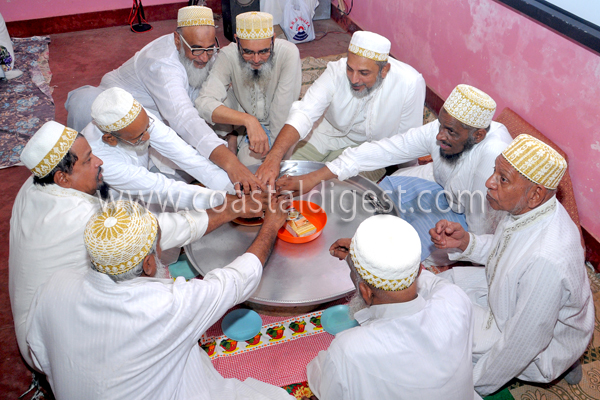
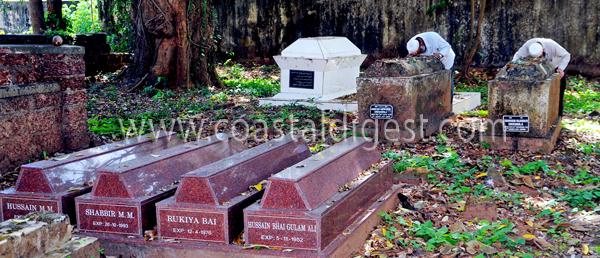
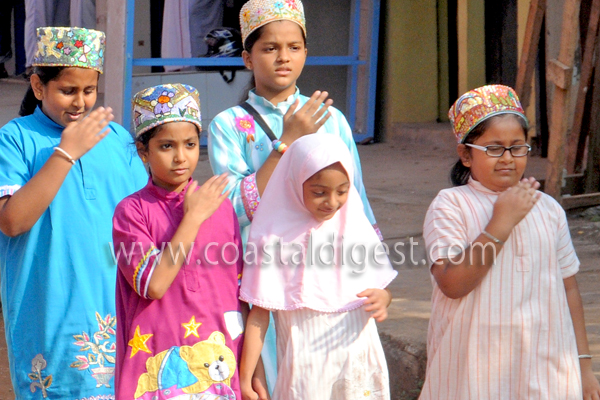
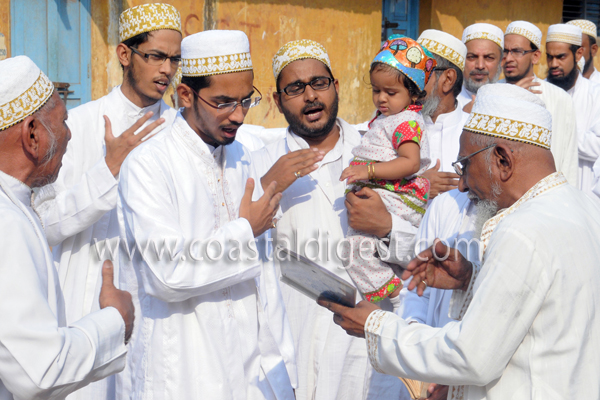
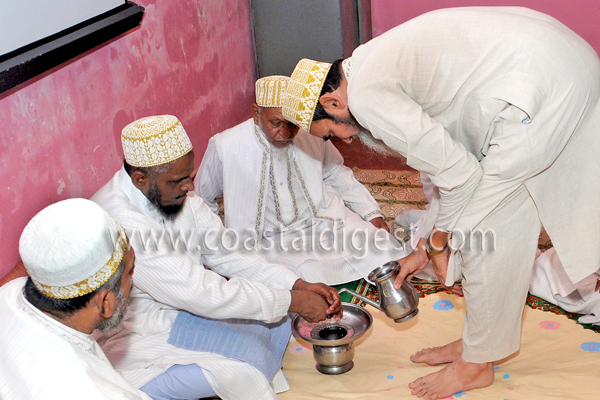
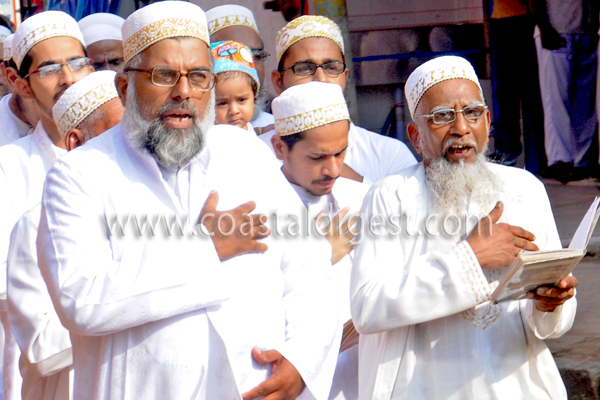
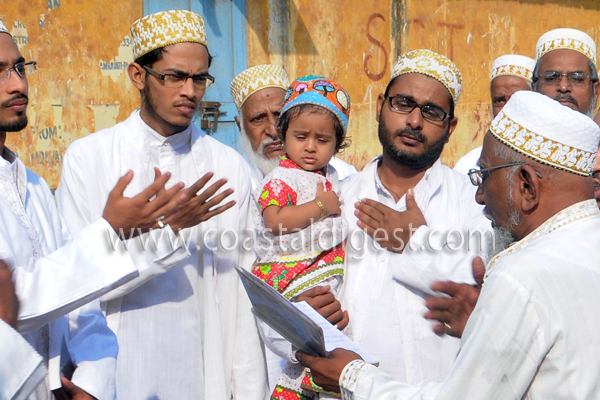
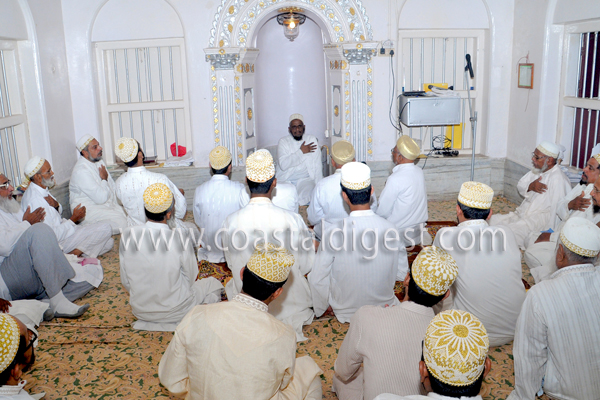
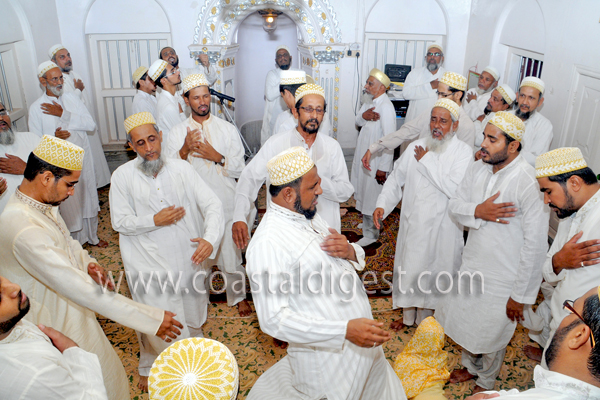
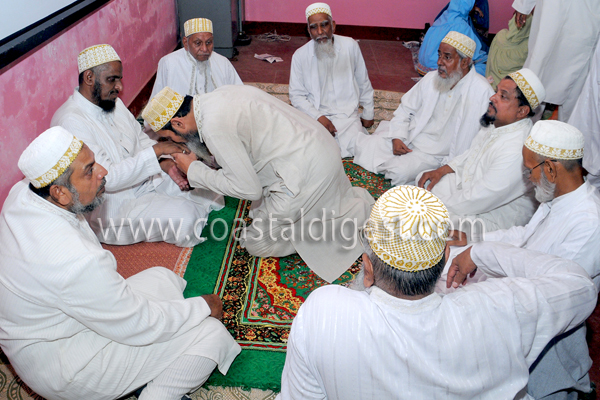
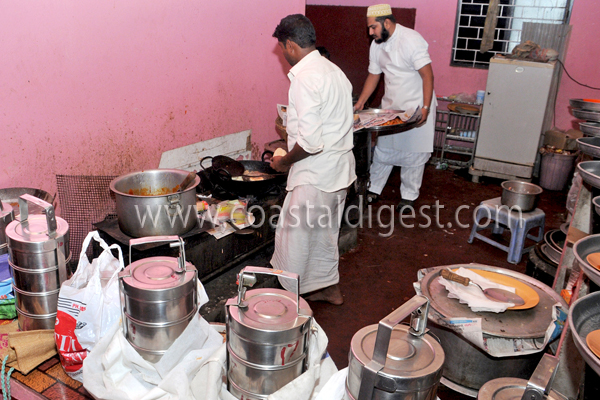
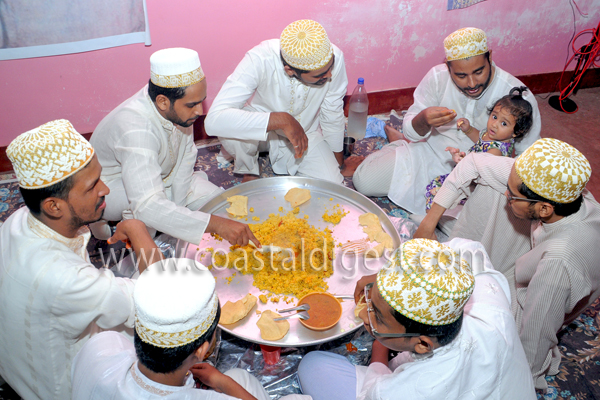
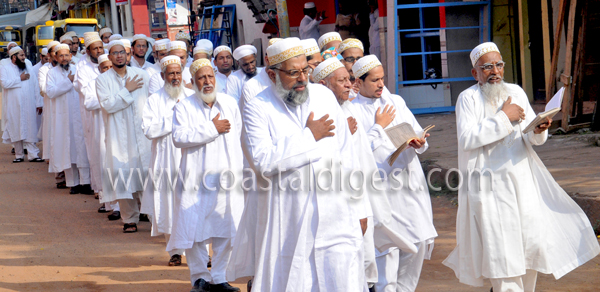
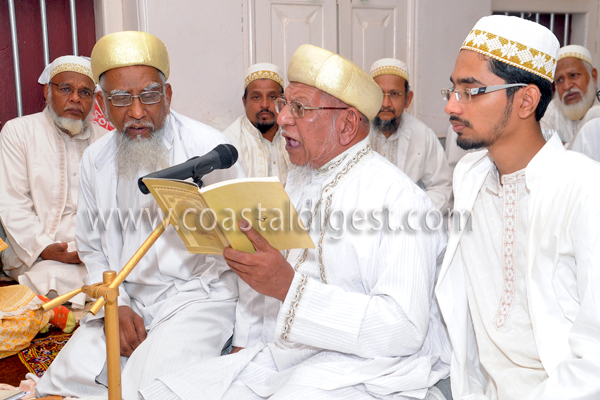
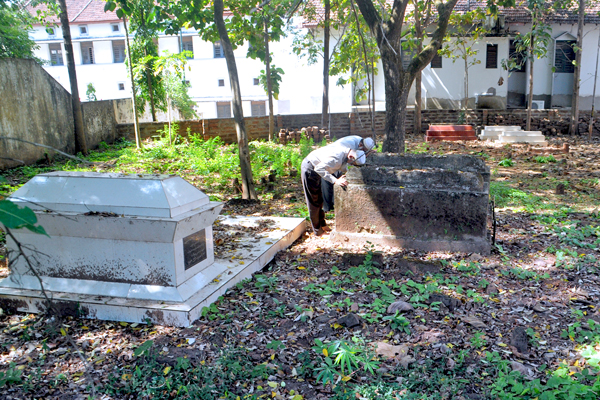
The Bohras are predominantly traders. “Trade has always been our forte and here in Mangalore too, we are more into trade. We are a rich community worldwide. We are peace loving people and are normally not associated with violence and riots. As traders we have got adopted to Mangalore well. Although our mother tongue remains Gujarati, we speak Beary, Tulu, Kannada, Malayalam etc with ease. However, one finds many Arabic words mixed in our Gujarati and that way our language is slightly different from the one spoken by Gujarati Hindus”, says Mr. Kagzi.
A look at the calendar at Mr. Kagzi’s shop and one gets to see a glimpse of the Gujarati connection that the community has. The calendar with Gujarati text and numerals, referred to as the ‘Misri’ calendar, is of great importance to Bohras. “We only follow the Misri calendar. Although the months and dates are Hijri dates, the calendar is called ‘Misri’ because of its Egyptian link. Egyptians were expert astronomers and we refer to this calendar in terms of the change of months etc unlike others for whom sighting of the moon is of greater importance. That is the reason why there is no question of 29 fasts in Ramadan for us. Our Ramadan is of complete 30 days and we celebrate Eid on the very day of Eid mentioned in the Misri calendar. However, one must not confuse Arab tradition as being different from the Egyptian tradition. At the time of the Prophet Muhammad (pbuh), Egypt was part of the larger Arab landscape”, reveals Mr. Kagzi.
The entire Bohra community in Mangalore belongs to the Dawoodi Bohra clan. A noteworthy feature of the community is its effort in maintaining a distinct identity and bonding. Says Musthansir, Secretary, Bohra Association, Mangalore: “As a community, we Bohras give a lot of importance to brotherhood and remaining organized. Many Bohra students from other parts of the world, especially from the African continent come down to Mangalore and Manipal to study. Our Bohra organizational structure is such that each of those students or any Bohra coming down to our place here will first find out where the Bohra community centre is. Our prayer sessions and ‘majlis’ sessions are such that it is mandatory for each and every Bohra to attend them. No Bohra goes away without coming in contact with us. Besides, all Bohras around the world have an ‘E-Jamaath Card’ with them as a common identity proof. No matter which part of the world he may be in, a scan of his E-Jamaath Card and his entire bio data will be available. This system was introduced 10 years ago. Our community is completely computerized. Our headquarters which provides us these identity cards is in Mumbai”.
That apart, another interesting system in place in the Bohra society is the supply of food for all Bohra families from a common centre. “We Bohras do not cook food except on Sundays. We get food from the community centre. In every Bohra society all around the world, this system has now come into force. We have a community centre here in Mangalore too called Faizul Burhaniyya, from where food is supplied to all Bohra families living in the city. Each family places its tiffin boxes at the centre and they are returned back full of food. Normally breakfast and dinner needs are fulfilled through this system. Since most of us are traders, we have lunch outside. But otherwise, it is the food that comes from the centre that we all eat”, says Mr. Musthansir.
The Bohras of Mangalore love their food. “We are passionate eaters. We have a royal breakfast and a good dinner. The lunch is rather light. From kheemas, omlettes, jam and chapattis to a host of other delicious dishes, our breakfast is normally heavy. We believe that the morning food intake has to be a heavy one”, grins Mr. Kagzi. Appetite apart, the Bohras hold values and traditions of dining in high esteem. “We take food keeping the Sunnah (method) of Prophet Muhammad (pbuh) in mind. We sit together and eat in one Thaal (plate). Not a single grain of food is to be left alone and thrown into the wash basin. Salt and head covering are inseparable aspects of our dining. The first thing to be tasted is salt and so should be the case at the end. No Bohra will eat without the topi (cap) on his head. When someone eats without a topi and without salt, we consider it inferior in our circles. Also, you are not likely to find a Bohra without a beard. We develop a sense of tradition among our children this way”, discloses Mr. Kagzi.
The ‘topi’ or the skull caps that Bohras wear also have some distinctness about them. All Bohras wear a white uniform styled topi with a unique design accentuated with the borders made of either golden or silver threads. “The topi is one of our objects of identity. We can recognize a Bohra merely with the topi’, says Mr. Kagzi. Another distinct attire worn by Bohras is the white overcoat called as the ‘Imaami Libaas’. “The ‘Imaami Libaas’ is worn by Bohras on special prayer meetings. We generally wear white ‘Imaami Libaas’ as Prophet Muhammad (pbuh) liked white. Likewise, in all major important events like weddings, festivals, funerals etc, it is mandatory for us to wear the ‘Imaami Libaas’. You will not find Bohras wearing suits etc in weddings. Generally no pants or jeans are entertained with the ‘Imaami Libaas’. It is always the traditional ‘Izaar’. We keep stitching new Imaami Libaas for ourselves. Men would have 15-20 Imaami Libaas dresses with them. Other than that, on the occasion of Shab-e-Baraat, and Lailat-ul-Qadr, we make it a point that we pray on these nights wearing new clothes. We always keep separate clothes for ‘Namaaz’. The women too have dozens of traditional clothes with them. Unlike the usual burkha, they wear what is called as the ‘Rida’. The Ridas are expensive. Our women generally do not prefer black. They go for other colours. Some women will possess about a hundred Ridas”, says he.
Bohra women also visit the masjid to offer prayers. “There is no restriction on women. They will have a separate section to pray in the prayer house. It is not compulsory for them to come but they are not stopped from visiting the prayer house”, says Mr. Musthansir.
The Mangalorean Bohra community prays in a 350 year old prayer house located in the Bunder/Kudroli area. A priest, referred to as ‘Janaab Saheb’ by the Bohras, leads prayers and ‘majlis’ meetings. “The ‘Janaab Saheb’ is revered greatly by us. He is appointed and sent by the head of the community called as the ‘Daai-e-Mutlaq’. He takes care of the Imaamat responsibilities besides teaching our children Quran and other aspects of religion”, adds Mr. Musthansir.
For a community with apparent leanings towards the Shia school of thought, the month of Muharram is of great significance to Bohras. The Islamic new year on the first day of Muharram is celebrated in a grand way. “The Islamic new year is a pompous affair in Bohra circles. That day, we will have about 50 dishes on our dining menu comprising of samosas, cutlets, sweets, fruits, meat, curds, fish etc. The idea behind this is that we ask Allah to feed us throughout the year with all his different bounties”, says Mr. Kagzi. A key aspect for Bohras is that the fish brought from the market must be alive. “It is only after we touch it saying Bismillah (In the name of Allah) does it become Halaal (permissible) to eat. The fishermen wait for this opportunity and sell live fish to us at a high price that day because they know we will be coming for it”, jokes Mr. Kagzi. The first day of Muharram apart, ‘majlis’ sessions are held everyday at the prayer house for ten days and on the tenth day (ashura), the day on which Hazrath Imaam Hussain (ra), the grandson of Prophet Muhammad (pbuh) was martyred, a procession is taken out along the streets of Bunder wherein all members of the local Bohra community participate.
Although based in Mangalore for long, one does not find Bohras having matrimonial alliances with other Muslim communities in the region like the Bearys or even the Katchi Memon family in Mangalore which also has Gujarati roots. “We look for alliances in our own circles from other cities like Hyderabad, Secunderabad, Mumbai, Surat etc”, says Mr. Kagzi.
Mangalore has always been known for its multi-culturalism. The Bohra community too has over the years been a part of this multi-ethnic mixture of ingredients, with its little ‘Gujju’ flavour, and continues to be so.




Comments
Add new comment